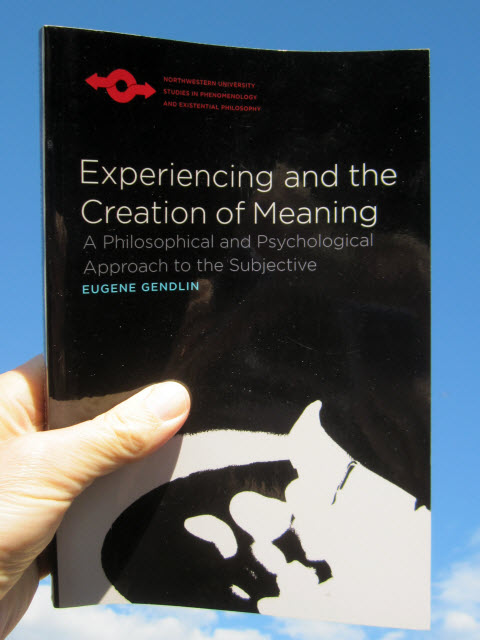This is a post in my series on organizing ”between and beyond.” Other posts are here. This is a retrospective of what has happened during the week. The purpose is to reflect on the work itself. Here is my previous retrospective. Here is my next retrospective.
What has happened? What needs to be done?
I finished reading Experiencing and the Creation of Meaning by Eugene Gendlin this week. It’s a most interesting book, so I will write a book review.

As mentioned last week, I think that Eugene Gendlin’s notion of experiencing is directly related to David Bohm’s deeper generative order. Experiencing is a generative source of felt meaning which unfolds into action, which has further meaning.
I can see many parallels between David Bohm and Eugene Gendlin’s thinking. David Bohm’s generative order is a deeper order out of which the manifest form of things emerge.1 This order is fundamental in nature and in consciousness. The generative order escapes definition according to Bohm.2 Gendlin’s view is that experiencing is preconceptual.3 A moment’s experiencing contains implicitly so many meanings that no amount of words can exhaust it.4 That includes the whole life of the person as it occurs in the present.5 Experiencing is always richer than what can be expressed in language.
The generative order is very different from how a machine works.6 Generative orders are not fixed by rigid hierarchies where lower levels are dominated by higher levels.7 Rather, the hierarchy grows out of the basic generative order.8 The implicate order extends the notion of generative order.9 The key point of the implicate order is that it is fundamental. The explicate order unfold from the implicate order.10 Implicate and generative orders are ultimately at the ground of all experience, according to David Bohm.11 Experiencing is enfolded deep within the generative order. I think Eugene Gendlin would agree.
What was good? What can be improved?
I am excited about the parallels I see between David Bohm and Eugene Gendlin’s thinking. However, I need to look more into Bohm and Gendlin’s views of meaning.
Meaning, in Bohm’s view, is inseparably connected with information. Bohm suggests, furthermore, that activity is the meaning of information. All action, including inaction, takes place immediately according to the meaning of the total situation at the moment. Meaning indicates intention. Intention arises out of the perception of meaning. A choice to act, or not to act, depends on the meaning at the moment. Intention is sensed as a feeling of being ready to respond. Meaning and intention are inseparably related. Meaning unfolds into intention, and intention into action, which has further meaning. There is a constant unfoldment of still more meanings. Meanings can extend to ever greater levels of subtlety as long they are perceived freshly from moment to moment. The perception of new meaning profoundly moves people. Again, I think Gendlin would agree, but I need to look more into this.
Notes:
1 David Bohm and F. David Peat, Science, Order, and Creativity (Routledge, 2010, first published 1987), p. 148.
2 Ibid., p. 155.
3 Eugene Gendlin, Experiencing and the Creation of Meaning: A Philosophical and Psychological Approach to the Subjective (Northwestern University Press, 1997, first published 1962), p. 30.
4 Ibid., p. 34.
5 Ibid..
6 David Bohm and F. David Peat, Science, Order, and Creativity (Routledge, 2010, first published 1987), p. 156.
7 Ibid., p. 161.
8 Ibid..
9 Ibid., p. 168.
10 Ibid., p. 176.
11 Ibid., p. 187.
Related posts:
Organizing in between and beyond posts
Leave a Reply
You must be logged in to post a comment.